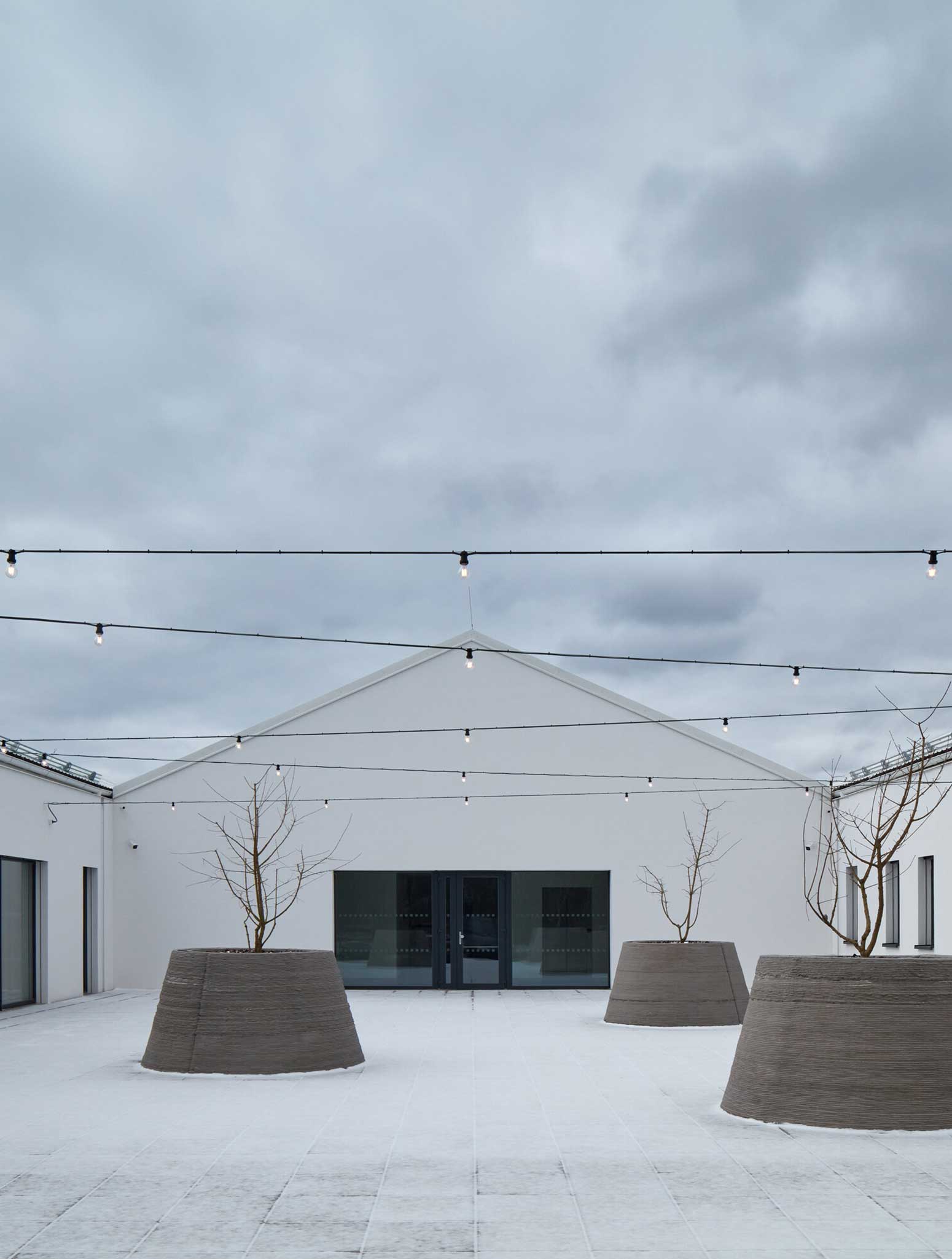
The sanatorium for children with respiratory problems has a tradition of more than thirty years in Ostrov u Macochy in the Blansko region. The environment of the Moravian Karst Protected Landscape Area has a beneficial effect on children’s health, with the favourable climate of the adjacent Císařská jeskyně (Imperial Cave) also being part of the treatment. It is the only specialised treatment centre for children in the Czech Republic where a natural karst cave, inaccessible to the public, is used to treat respiratory problems, asthma, and allergies, as well as to strengthen immunity.
The new complex has replaced the original temporary and inadequate building. The site in the northern part of Ostrov u Macochy is adjacent to the area with family houses. The compactness of the village is preserved by interconnecting the building structures with mature greenery. The building itself is set in the south-eastern part of the site and leaves a wide swath of green space surrounding the village.
The shape of the buildings is inspired by the archetype of a house from a child’s drawing, multiplied into four functionally different parts. By extending two segments, a permeating composition that draws nature and daylight in is created. The two-storey medical complex in white refers to the colour of limestone, which is typical of the region. It consists of four elongated tracts with gables oriented perpendicular to the service road. The setting into the terrain is based on its morphology, part of it is recessed. Due to the slope of the site, both floors are directly accessible from the terrain. The strictly rectangular layout of the complex is deliberately softened by circular elements (benches in the courtyard and terrace, the shape of the light fittings, skylights, etc.), partly with the practical aim of eliminating injuries from sharp corners.
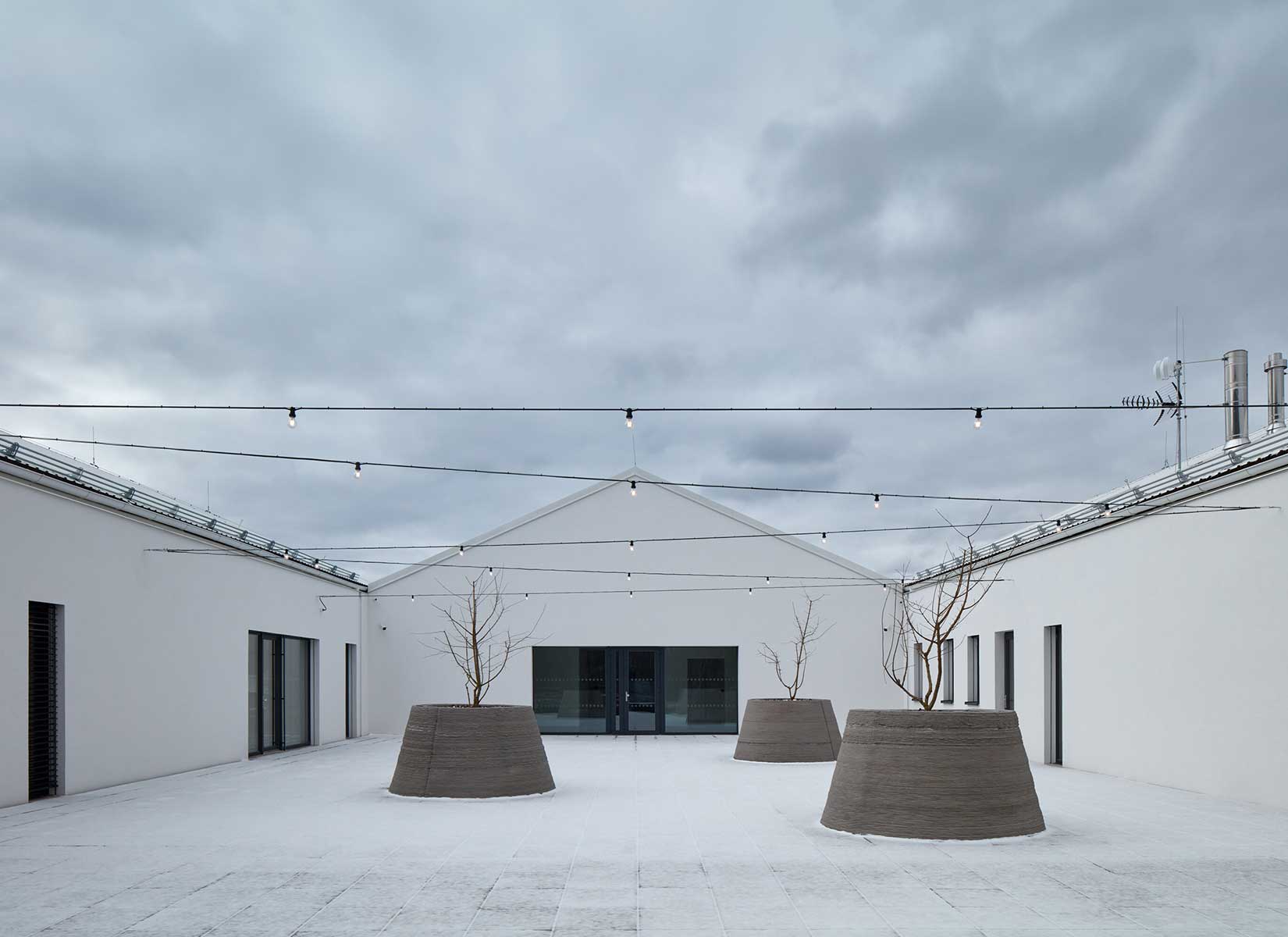
PHOTOS BY BoysPlayNice
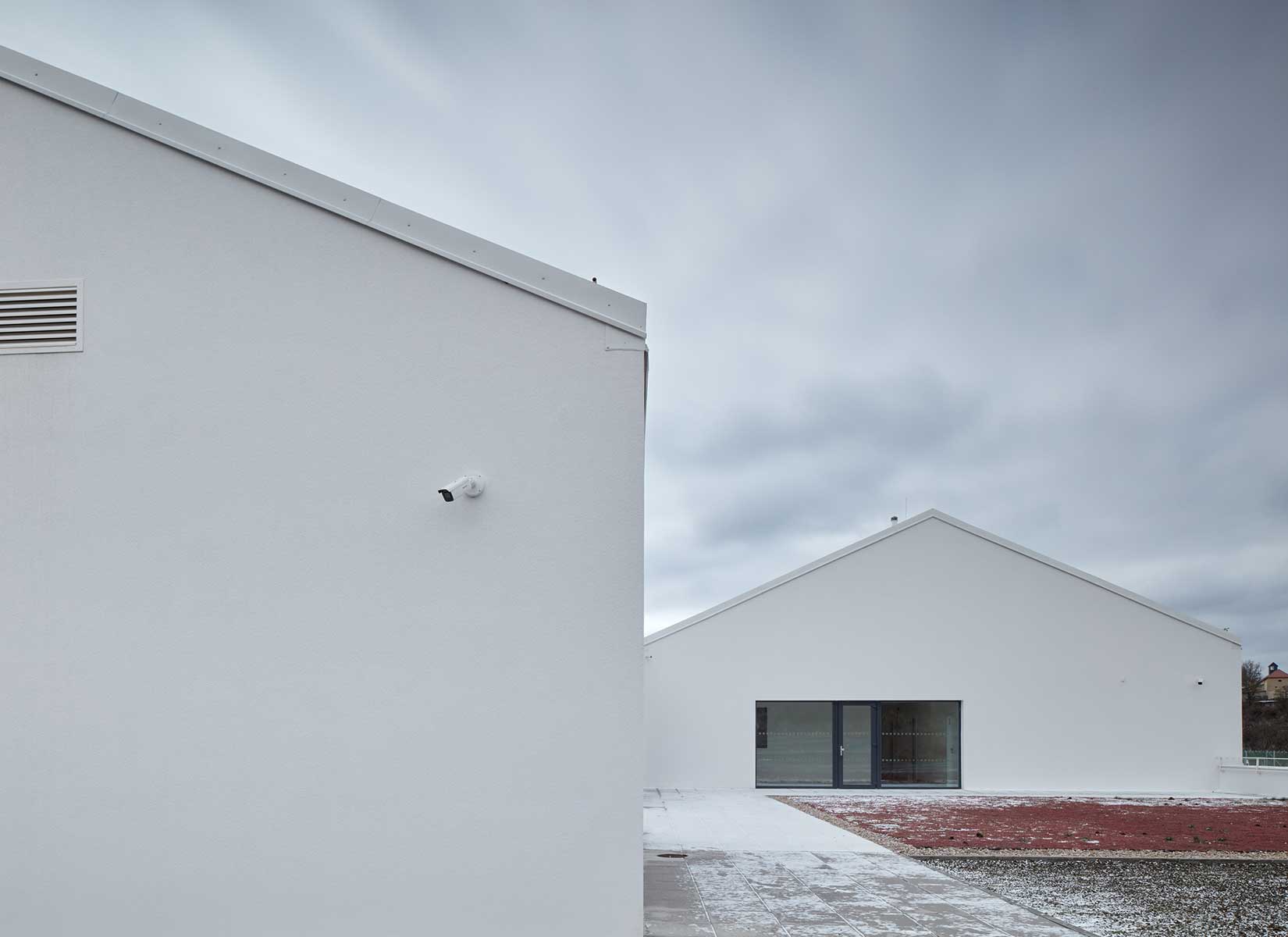
PHOTOS BY BoysPlayNice

PHOTOS BY BoysPlayNice
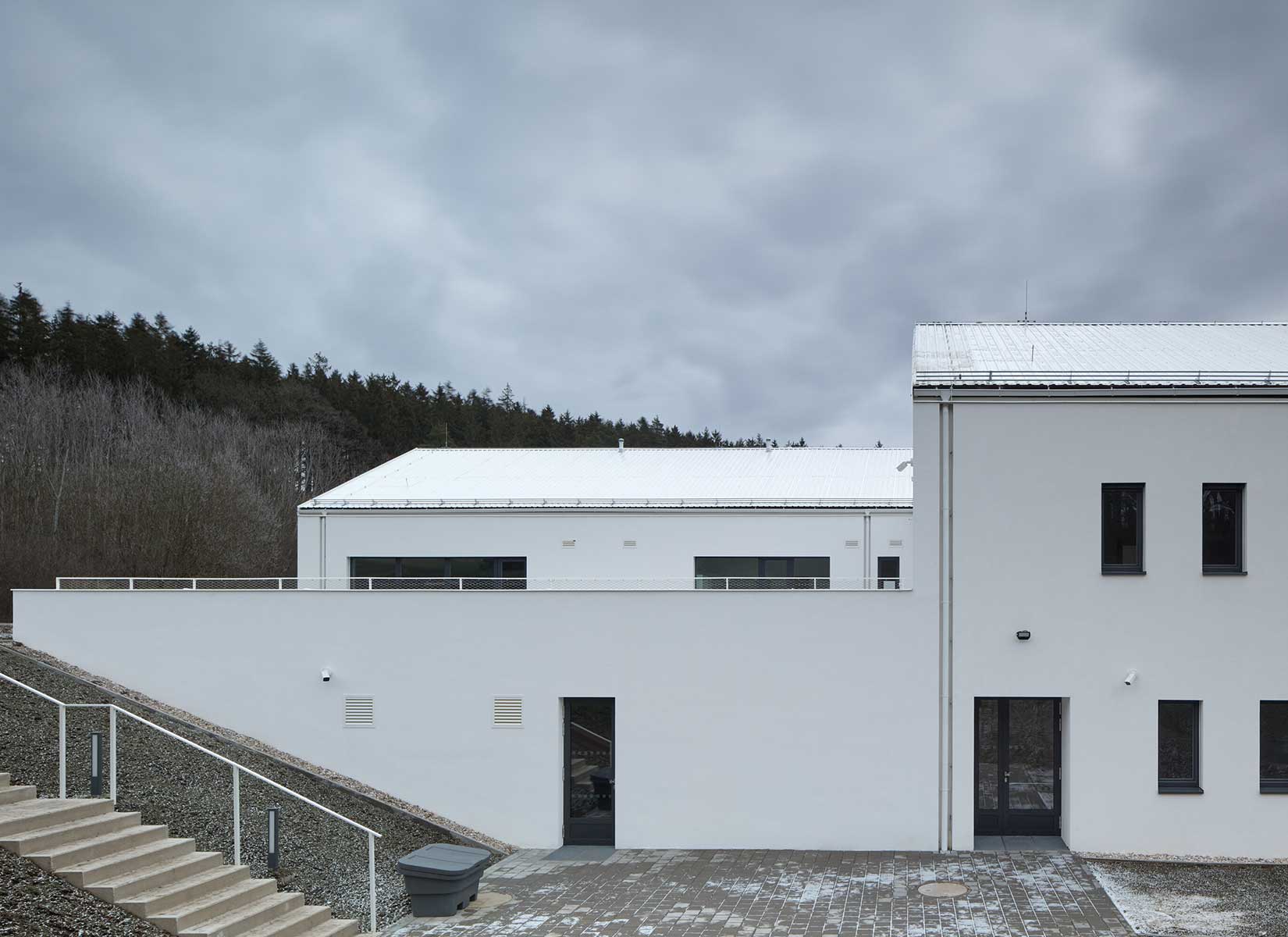
PHOTOS BY BoysPlayNice

PHOTOS BY BoysPlayNice
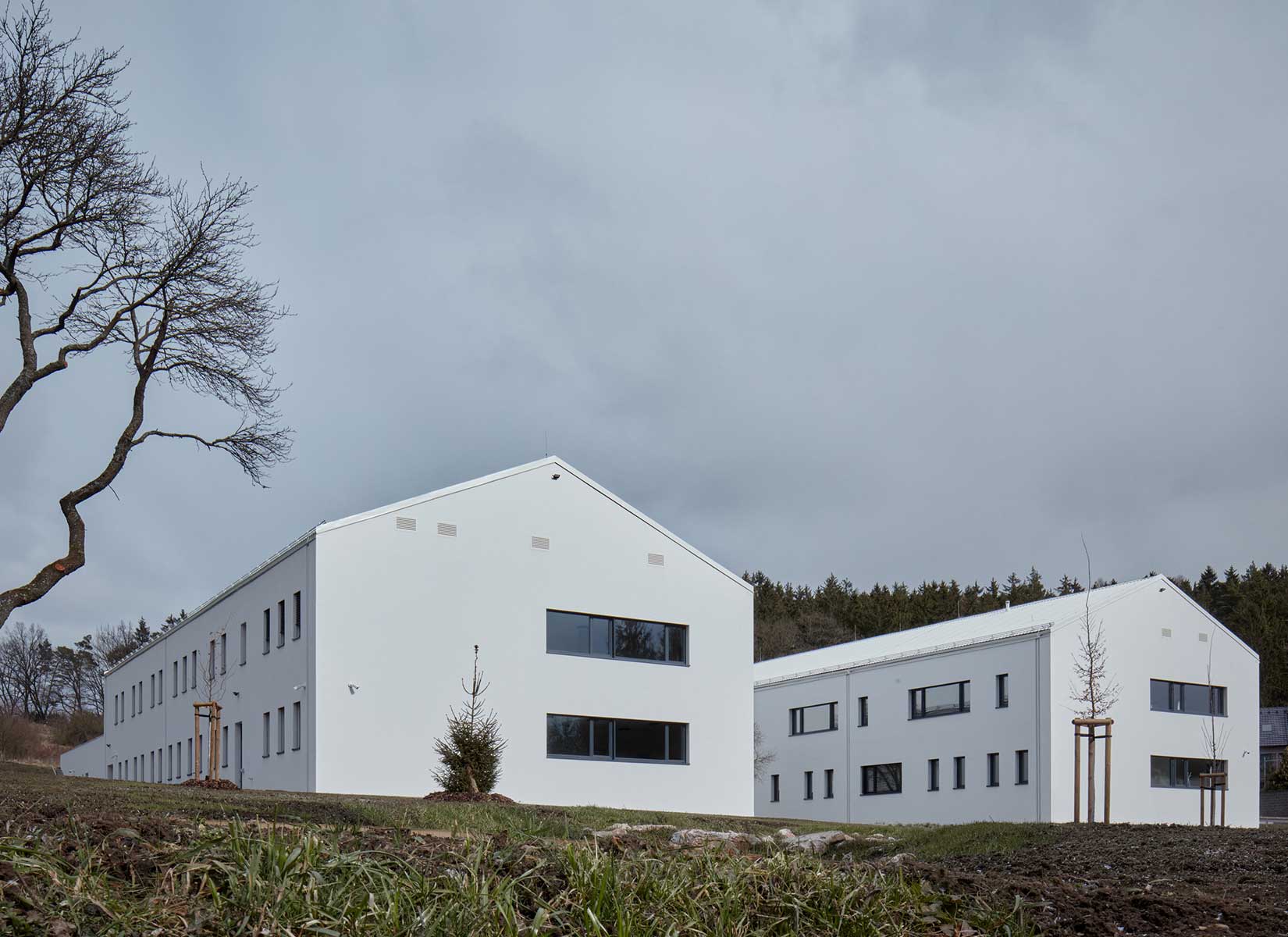
PHOTOS BY BoysPlayNice
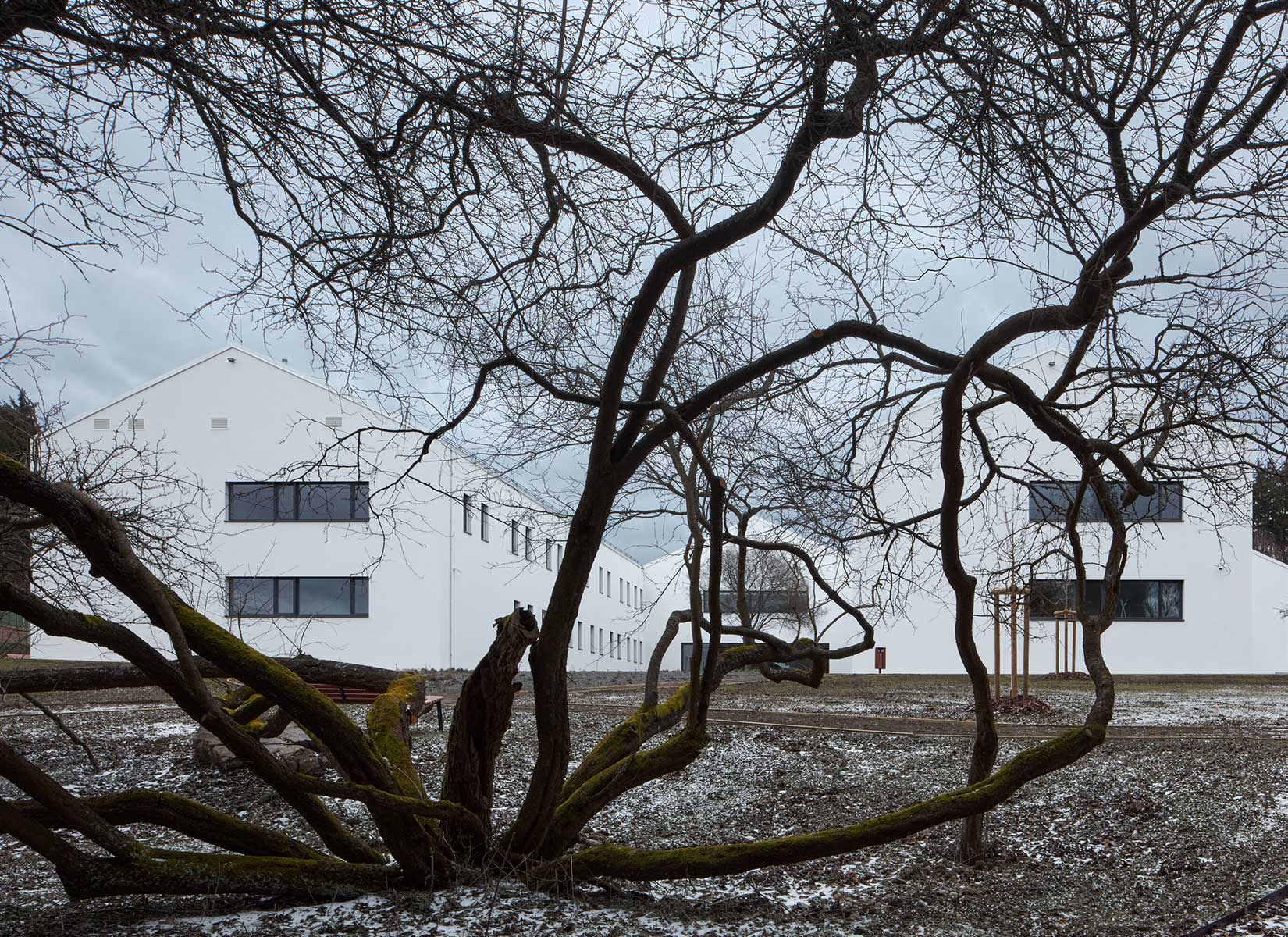
PHOTOS BY BoysPlayNice
The building meets strict hygiene regulations and high indoor environmental quality requirements, is managed using smart technologies, runs on renewable energy and has low operating costs. The sanatorium comprises several separate sections according to their purpose:
1. entrance area with reception and technical facilities on the ground floor, dining room and kitchen on the first floor
2. medical section with a staff apartment on the ground floor, a school on the first floor, and technical facilities in the basement
3. wellness part with gym on the ground floor and balneotherapy facilities on the first floor, technology in the basement
4. two-storey accommodation area, with changing rooms, drying rooms and laundry in the basement, connected to the exterior
All these sections are accessible from the central alley and the stair hall. The garden is divided into zones that are functionally connected to the sanatorium, with emphasis on the terrain morphology. The communication connection reflects the structure of the area, and the site is crossed by two service communication axes. There are playgrounds, play elements for children and a gym. Newly planted trees, shrubs and flowers are non-hybrid with a predominance of local species.
One of the design principles is the so-called “healing architecture”. Although children’s perception is different from adults, the aim was to create a healing complex in which everyone would feel comfortable. The desire for “healing architecture” is reflected in the overall appearance, which is personified by the pure white colour of the facade and roof, as well as the setting in the landscape and terrain. The interiors feature bright colours and their combinations and are consistently linked to the outdoor relaxation areas.
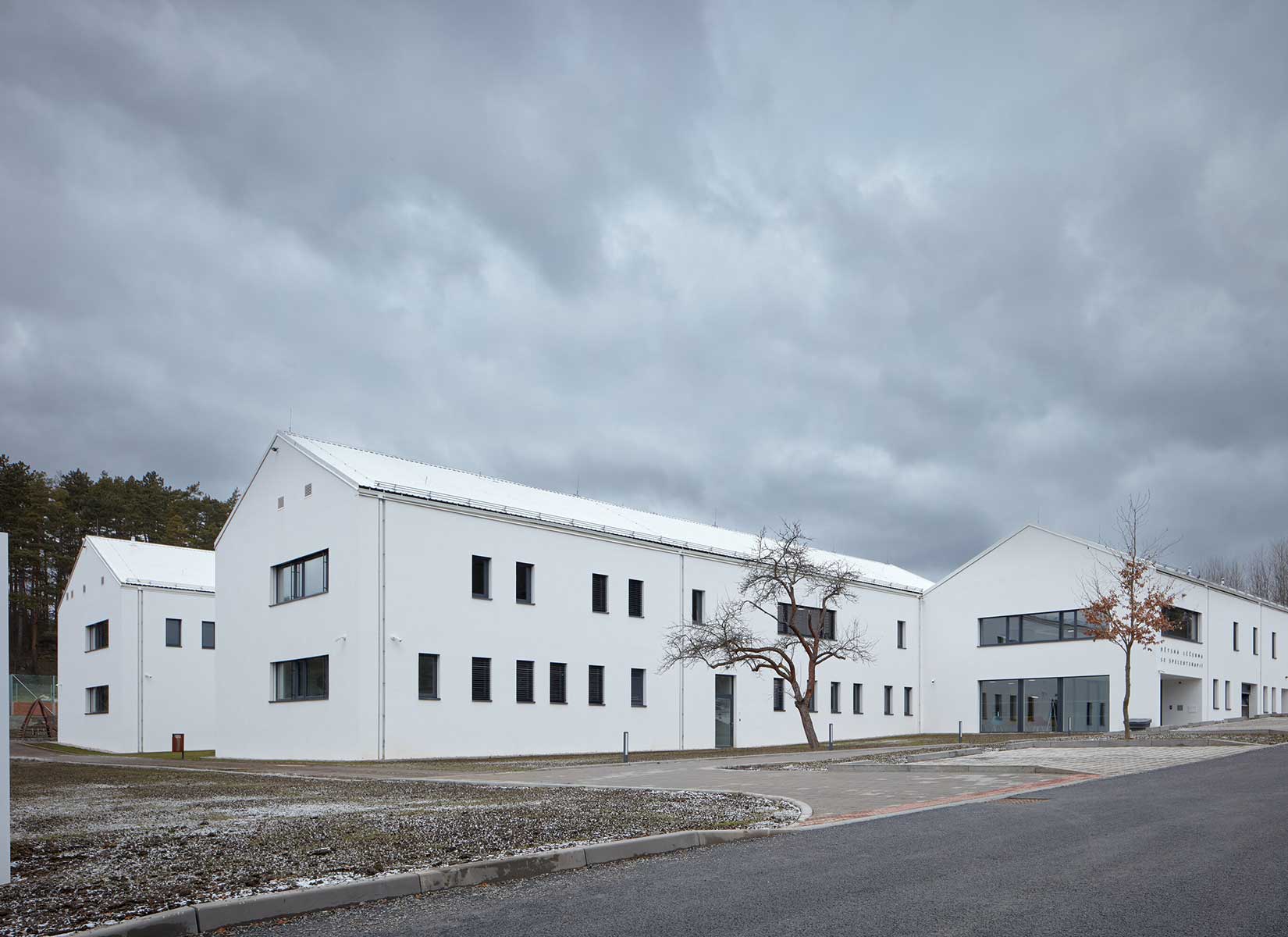
PHOTOS BY BoysPlayNice

PHOTOS BY BoysPlayNice
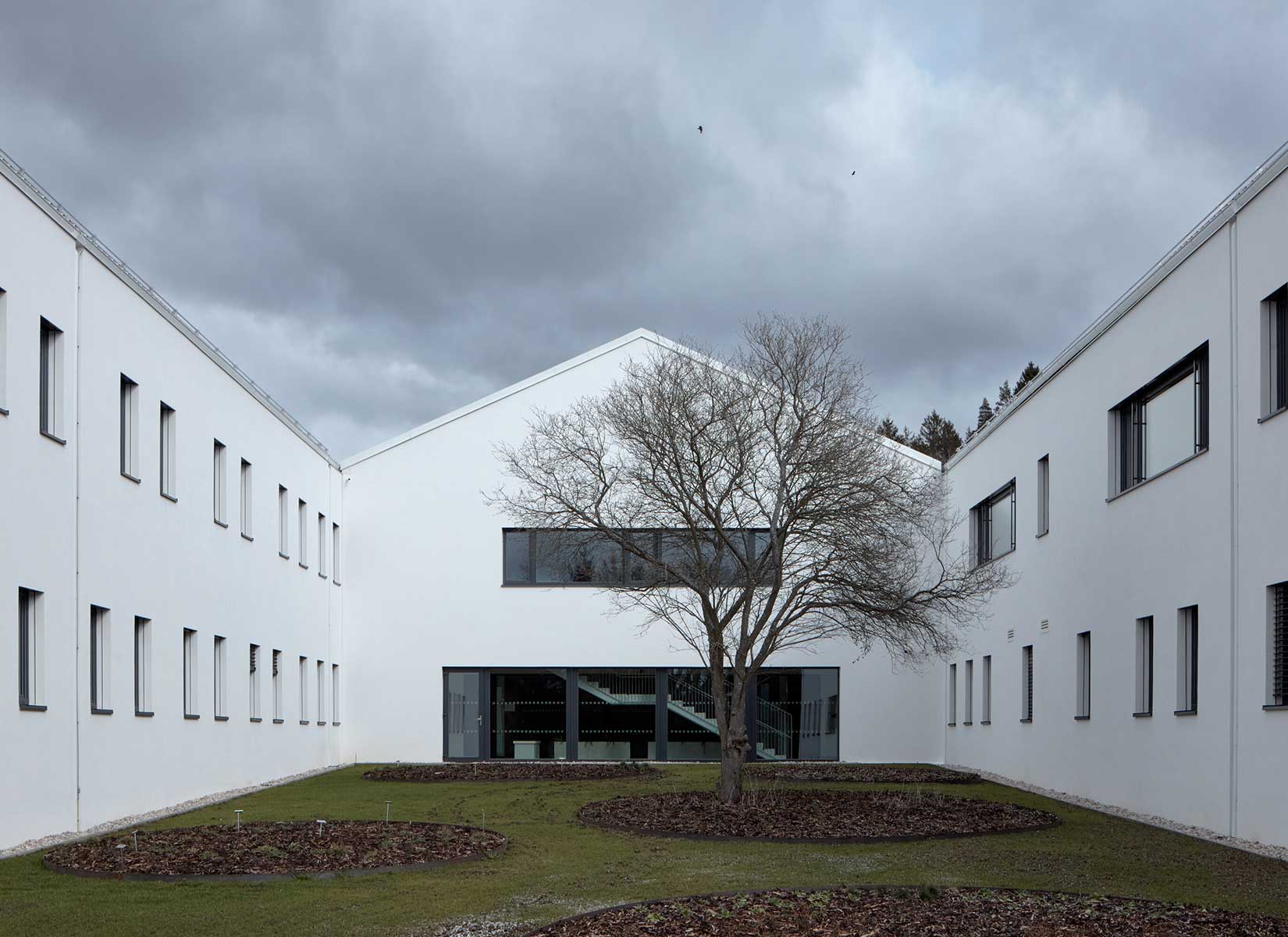
PHOTOS BY BoysPlayNice

PHOTOS BY BoysPlayNice

PHOTOS BY BoysPlayNice
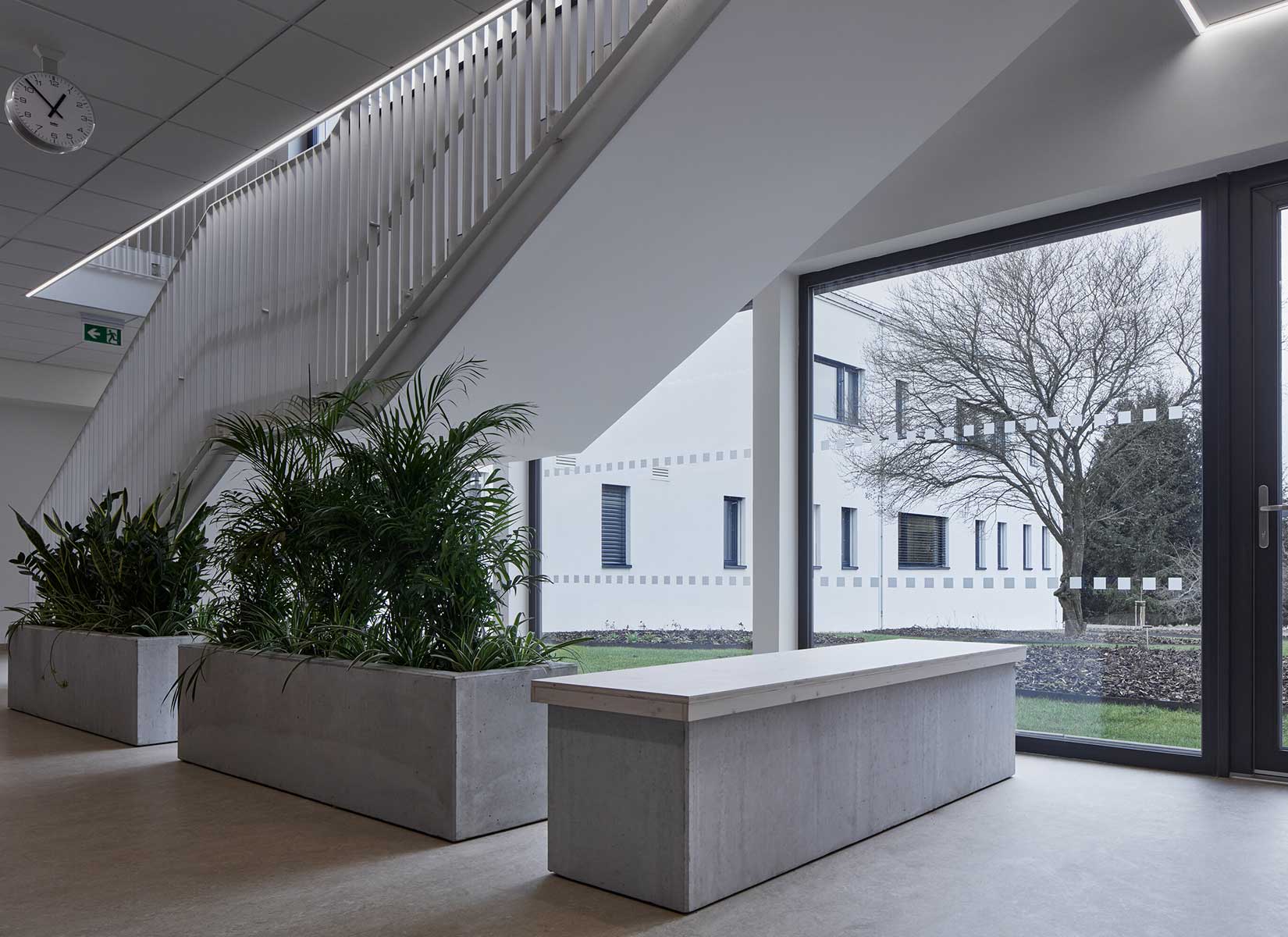
PHOTOS BY BoysPlayNice
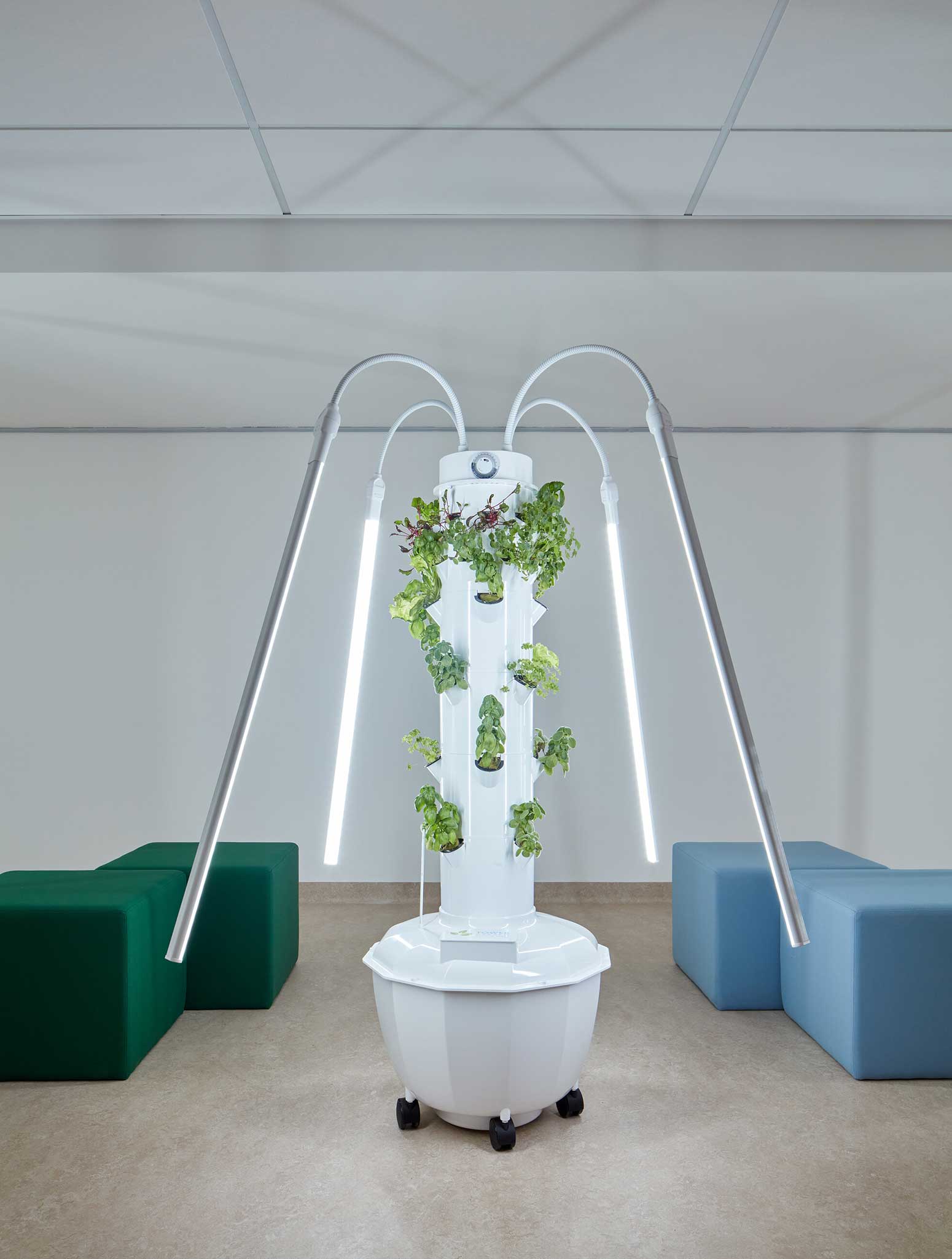
PHOTOS BY BoysPlayNice
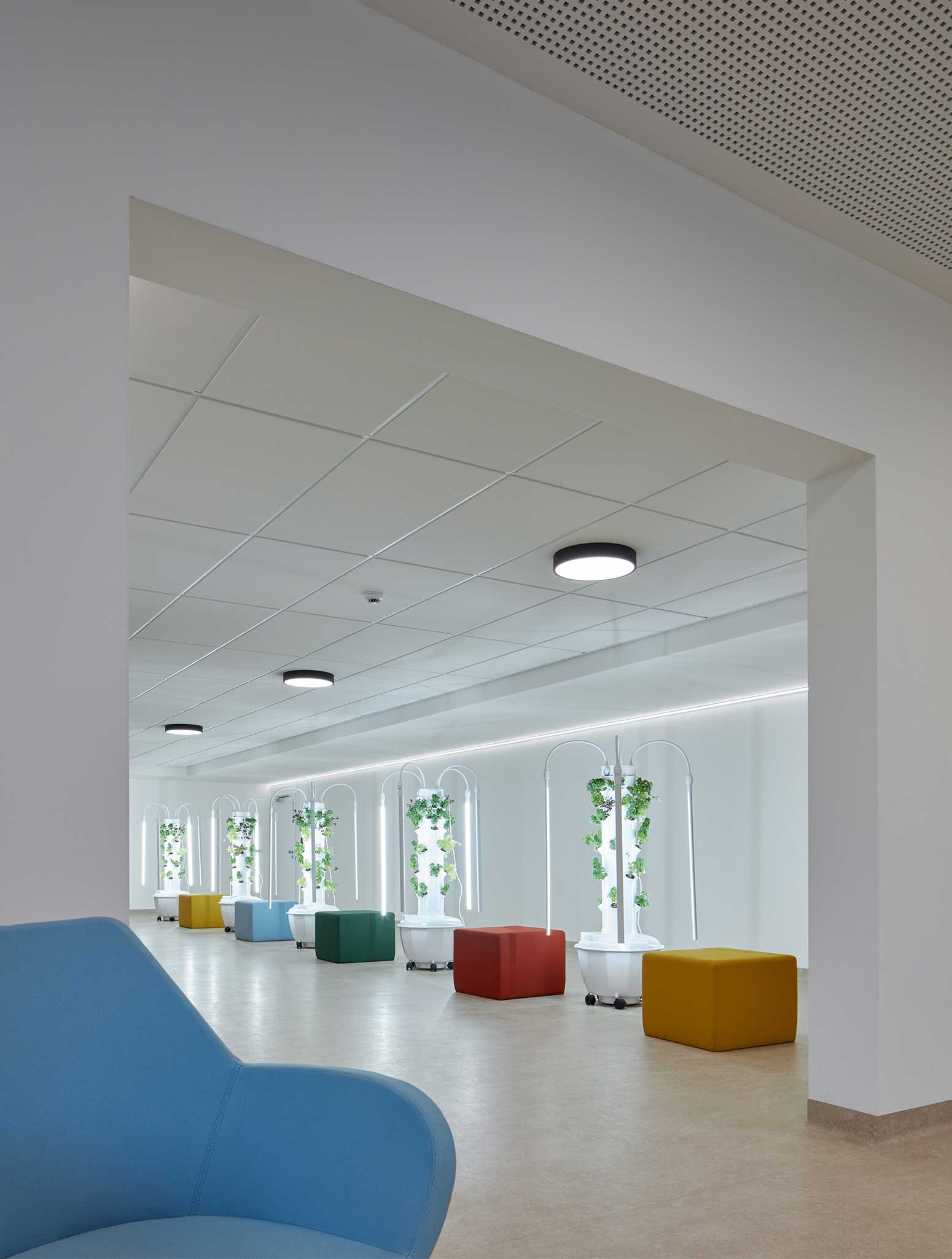
PHOTOS BY BoysPlayNice
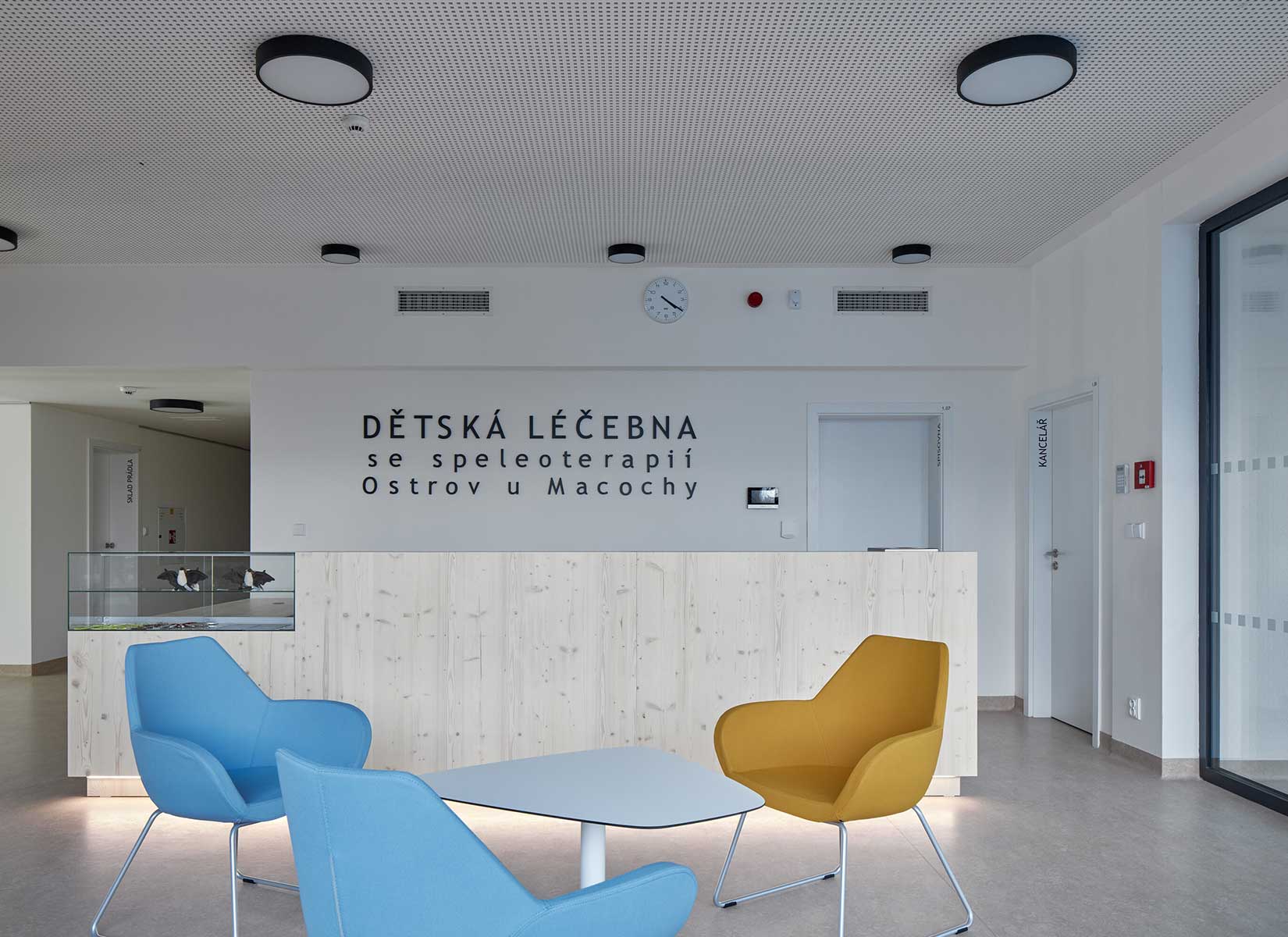
PHOTOS BY BoysPlayNice

Project information
- Architect:Adam Rujbr Architects
- Location:Czech Republic,
- Project Year:2023
- Photographer:BoysPlayNice
- Categories:Commercial,Healthcare,Patio